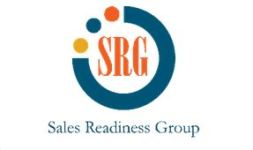ATD Blog
6 Key Tactics to Ask for Referrals in Sales
Thu Dec 21 2023

Last weekend, a man knocked on my front door and introduced himself as a painter named Steve with a unique specialty: painting your home address on the curb in front of your house. But Steve wasn’t looking for my business.
He reminded me he’d already painted my address on the curb a few years ago. Steve was looking for referrals and told me that his number 1 source of new business is referrals. A few weeks earlier, one customer recommended Steve to a local neighborhood online user group, and now he could barely keep up with the business.
All of this made me think about how much money sales reps often leave on the table when they don’t take the time to ask for referrals and how easily they can change their approach. So, here are some practical steps to improve your referral game and unlock the full potential of your network.
#1: Recognize the Best Timing
The ideal time to ask for a referral is right after the client has benefited from your product or service. A great cue is after a client compliments you.
For example, if a client expresses their satisfaction with your product or service, take that opportunity to ask for a referral. You can say, “I’m glad you’re happy with our product/service. If you know anyone else who might benefit from our offerings, I would greatly appreciate your referring them to us.”
The other best time to ask for a referral is anytime you think of it. Be cordial and professional, but don’t hesitate to ask.
#2: Ask for Help
When requesting a referral, approach it with humility. Most people want to be helpful, so use language like, “I would appreciate your help in expanding our business by referring us to others who may benefit from our products/services.”
By positioning your request as seeking assistance rather than expecting a favor, you’re more likely to receive a positive response.
#3: Make It Easy
Avoid using generic phrases like, “Do you know anyone else who could use our services?” as this often results in a negative response. Instead, be specific, and use your target client criteria to create a short description of exactly who you’re looking for.
For instance, “Based on our ideal client profile, we’re looking to connect with professionals in the technology industry looking for innovative solutions to streamline their operations. Do you know anyone in your network who fits this description and could benefit from our services?”
#4: Use LinkedIn
Leveraging LinkedIn can be a powerful tool for asking for referrals. Research your client’s connections on LinkedIn and find common connections who might be interested in your product or service.
You can mention this in your request for a referral, such as saying, “I noticed that you’re connected to Jane Smith on LinkedIn. Would you mind introducing me to her or providing a referral? I believe our solutions could be of value to Jane as well.”
#5: Link the Referral
When requesting a referral, seeking permission to use your client’s name is essential. You can say something like, “Susan, who is also a satisfied client of ours, thought you might be interested in hearing about how our products/services have helped her in her business.”
Another option is to mention a common connection that has already referred you to the prospect, such as saying, “Jim referred me to you and thought we could explore how our offerings could benefit your business as well.”
#6: Say “Thank You”
Always express your gratitude to the client for giving you a referral. Thank them sincerely for their support, and let them know their referral is highly appreciated. Consider sending a thank-you note or a small gift card as a token of appreciation.
Keeping your client updated on the referral’s progress is also important. Let them know the outcome, and express your gratitude again for their help. If your client has referred business to you, be sure to reciprocate by referring business to them whenever possible.

